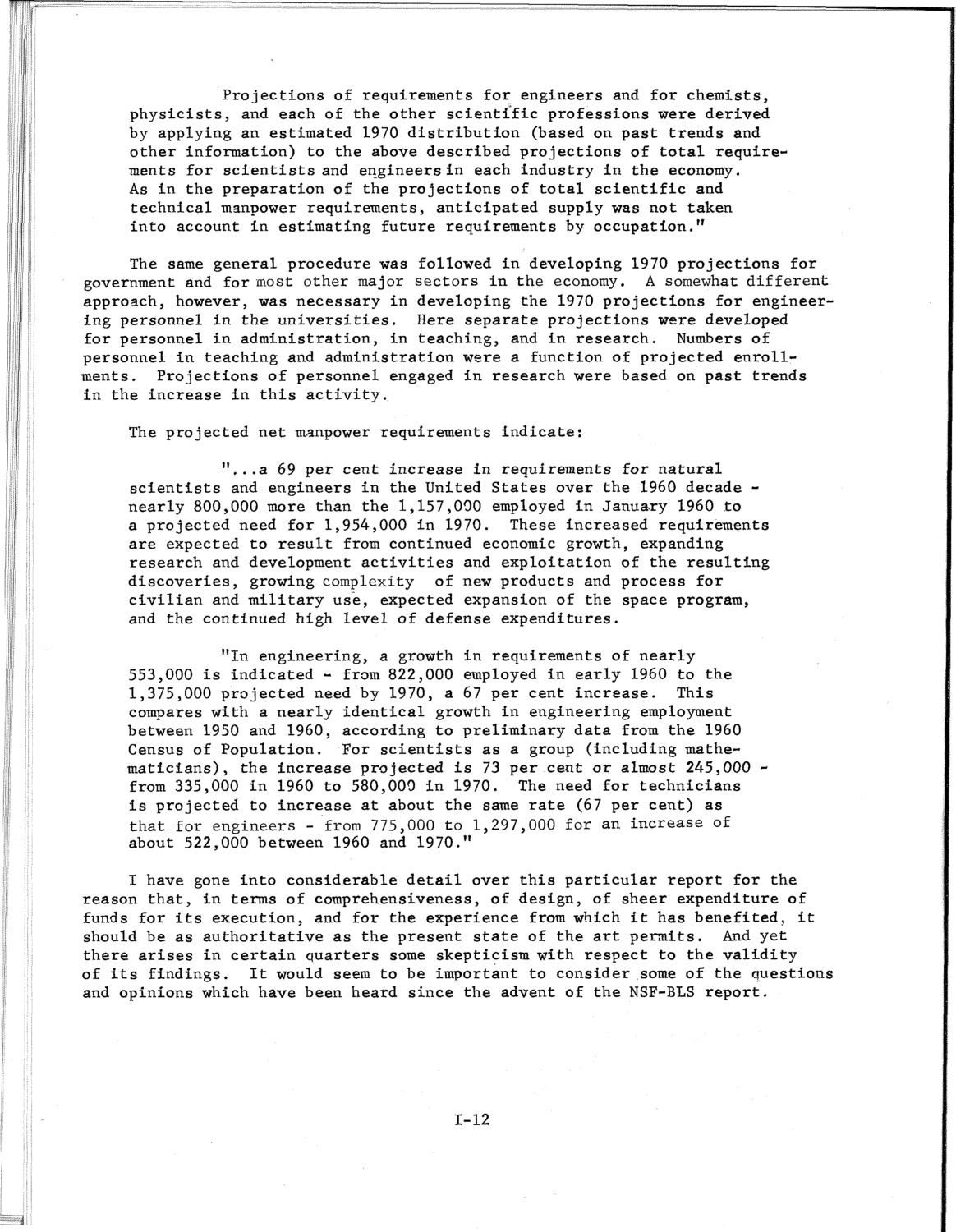| |
| |
Caption: SWE - Proceedings of the First International Conference of Women Engineers and Scientists
This is a reduced-resolution page image for fast online browsing.

EXTRACTED TEXT FROM PAGE:
Projections of requirements for engineers and for chemists, physicists, and each of the other scientific professions were derived by applying an estimated 1970 distribution (based on past trends and other information) to the above described projections of total requirements for scientists and engineers in each industry in the economy. As in the preparation of the projections of total scientific and technical manpower requirements, anticipated supply was not taken into account in estimating future requirements by occupation." The same general procedure was followed in developing 1970 projections for government and for most other major sectors in the economy. A somewhat different approach, however, was necessary in developing the 1970 projections for engineering personnel in the universities. Here separate projections were developed for personnel in administration, in teaching, and in research. Numbers of personnel in teaching and administration were a function of projected enrollments. Projections of personnel engaged in research were based on past trends in the increase in this activity. The projected net manpower requirements indicate: "...a 69 per cent increase in requirements for natural scientists and engineers in the United States over the 1960 decade nearly 800,000 more than the 1,157,000 employed in January 1960 to a projected need for 1,954,000 in 1970. These increased requirements are expected to result from continued economic growth, expanding research and development activities and exploitation of the resulting discoveries, growing complexity of new products and process for civilian and military use, expected expansion of the space program, and the continued high level of defense expenditures. "In engineering, a growth in requirements of nearly 553,000 is indicated - from 822,000 employed in early 1960 to the 1,375,000 projected need by 1970, a 67 per cent increase. This compares with a nearly identical growth in engineering employment between 1950 and 1960, according to preliminary data from the 1960 Census of Population. For scientists as a group (including mathematicians), the increase projected is 73 per cent or almost 245,000 from 335,000 in 1960 to 580,000 in 1970. The need for technicians is projected to increase at about the same rate (67 per cent) as that for engineers - from 775,000 to 1,297,000 for an increase of about 522,000 between 1960 and 1970." I have gone into considerable detail over this particular report for the reason that, in terms of comprehensiveness, of design, of sheer expenditure of funds for its execution, and for the experience from which it has benefited, it should be as authoritative as the present state of the art permits. And yet there arises in certain quarters some skepticism with respect to the validity of its findings. It would seem to be important to consider some of the questions and opinions which have been heard since the advent of the NSF-BLS report. 1-12
| |